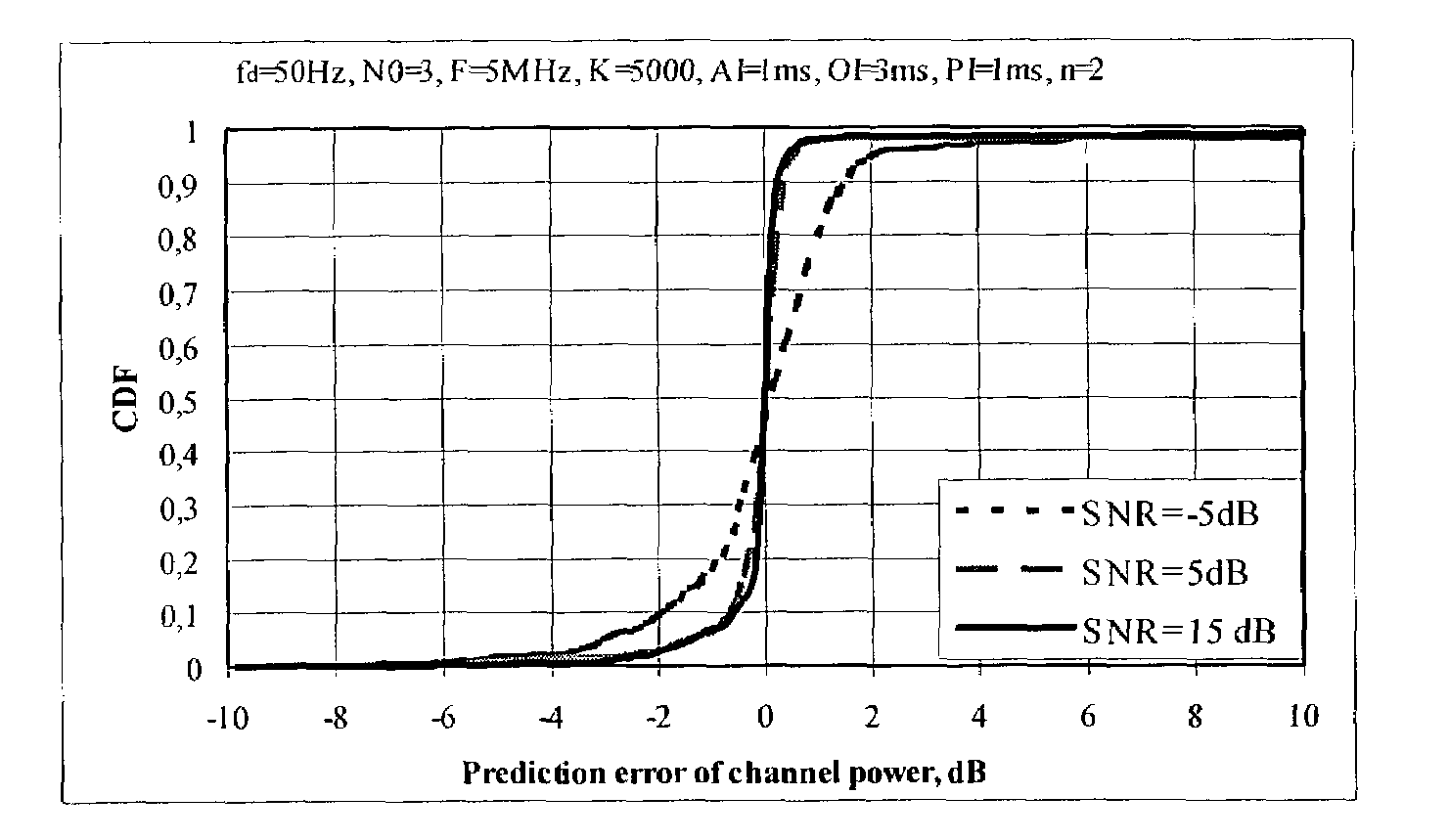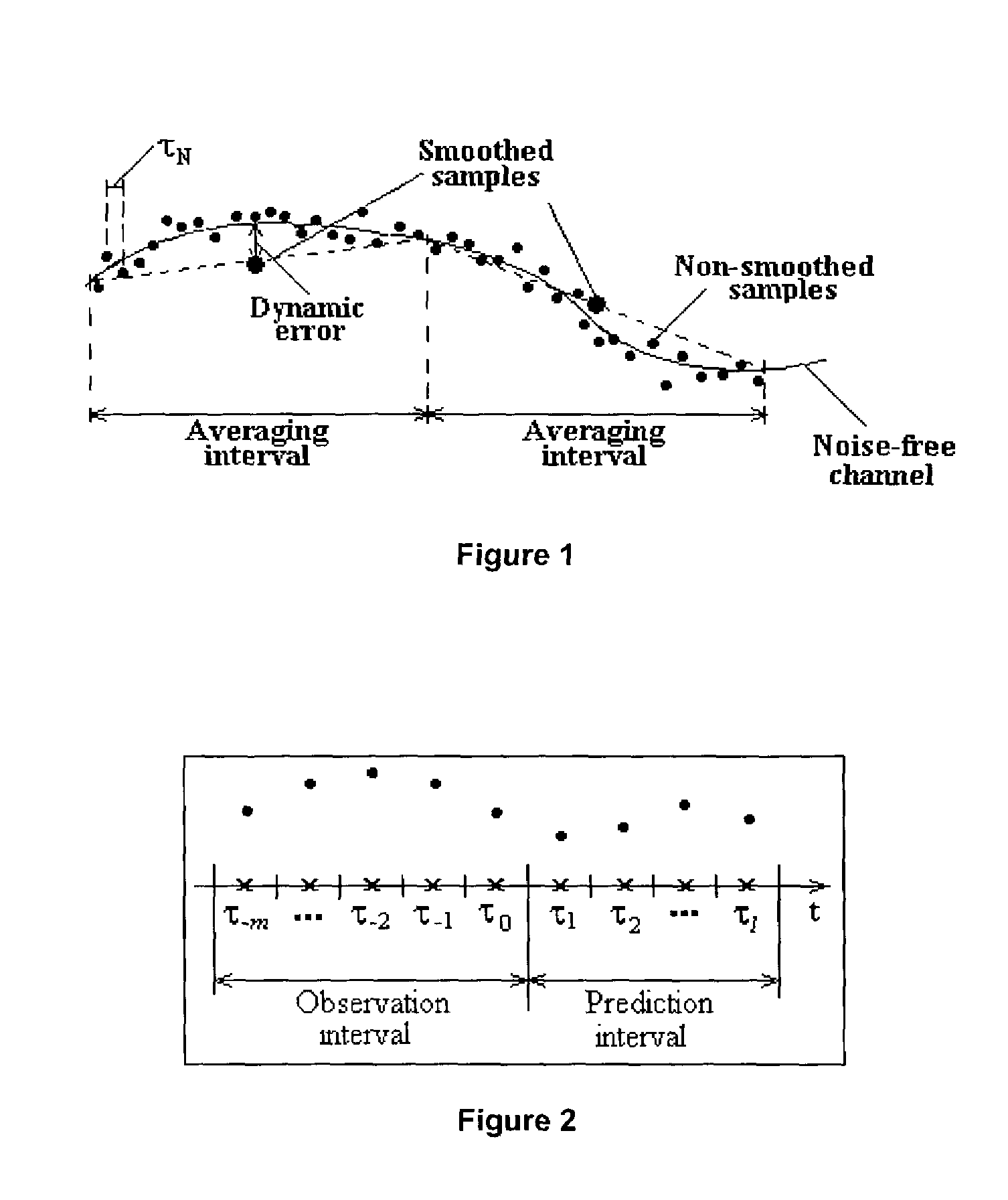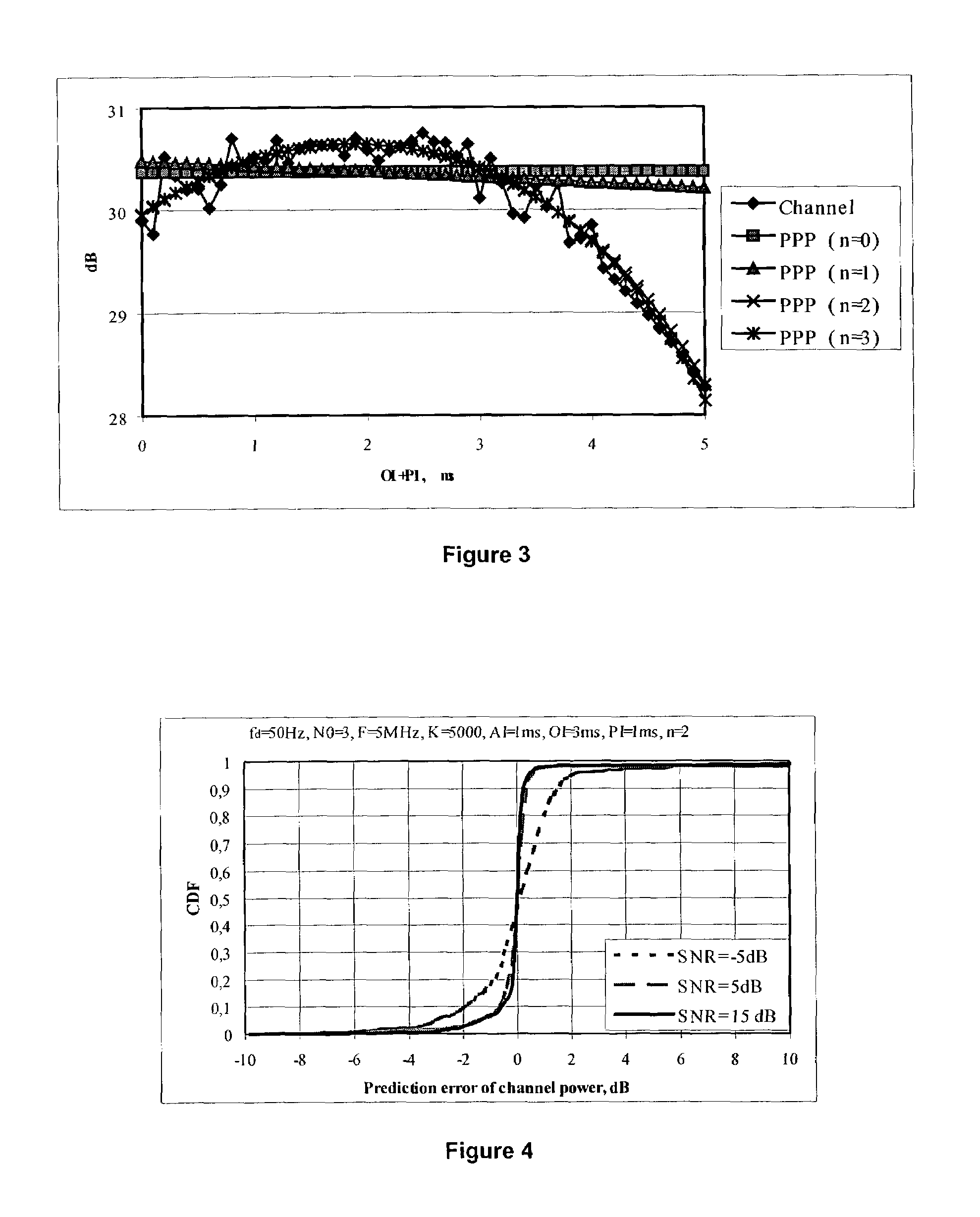Method of predicting wireless signal power
a wireless signal and power prediction technology, applied in the field of wireless signal power prediction, can solve the problems of inability to move devices, inherent delay, and the power of wireless signals received by terminal devices (e.g. mobile phones) to be susceptible to constructive and destructive interference,
- Summary
- Abstract
- Description
- Claims
- Application Information
AI Technical Summary
Benefits of technology
Problems solved by technology
Method used
Image
Examples
Embodiment Construction
[0047]A preferred embodiment of the invention is referred to herein as the Polynomial Power Predictor (PPP) method. The PPP method may be performed on signal processing apparatus, which may be in the mobile device or at the transmitting base station. The signal processing apparatus may be, for example, a digital signal processor (DSP), an application-specific integrated circuit (ASIC), a standard non-specialist signal processor, or a circuit made of discrete electronic components. Other suitable signal processing apparatus may be known to those skilled in the art.
[0048]The purpose of the PPP method is to predict what the power of a received wireless signal will be at some point in the future, after a period of time termed the ‘Prediction Interval’ (PI). This prediction of signal power is based on knowledge of a set of recent noisy measured samples of signal power, collected over what is termed the ‘Observation Interval’ (OI). The actual value of the signal power at points in the fut...
PUM
 Login to View More
Login to View More Abstract
Description
Claims
Application Information
 Login to View More
Login to View More - R&D
- Intellectual Property
- Life Sciences
- Materials
- Tech Scout
- Unparalleled Data Quality
- Higher Quality Content
- 60% Fewer Hallucinations
Browse by: Latest US Patents, China's latest patents, Technical Efficacy Thesaurus, Application Domain, Technology Topic, Popular Technical Reports.
© 2025 PatSnap. All rights reserved.Legal|Privacy policy|Modern Slavery Act Transparency Statement|Sitemap|About US| Contact US: help@patsnap.com



